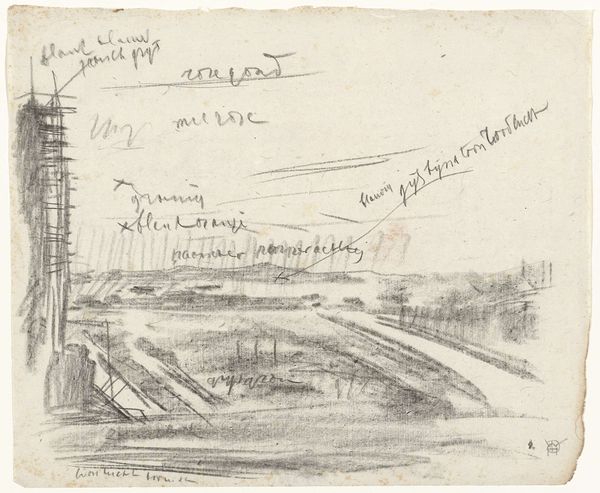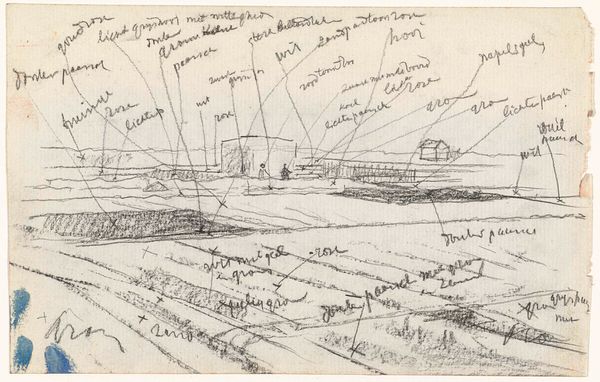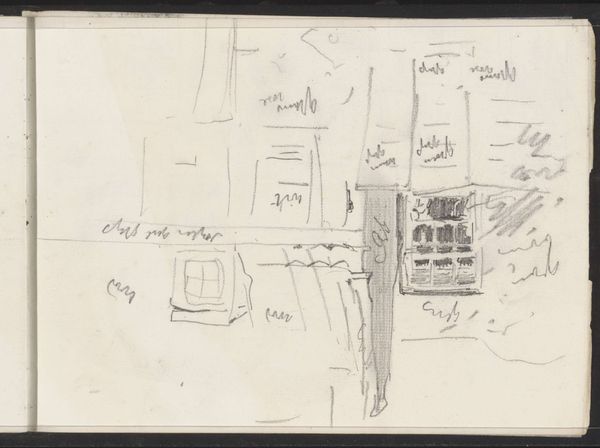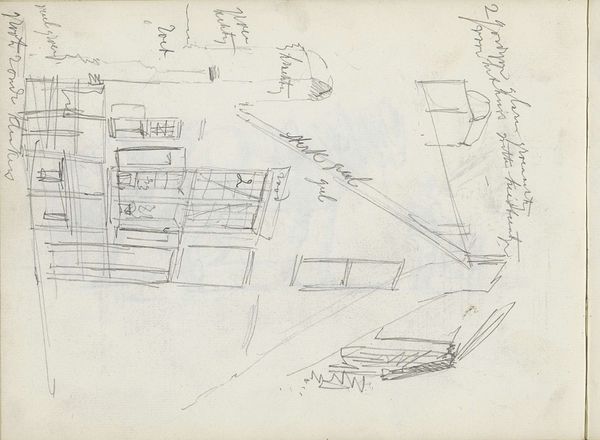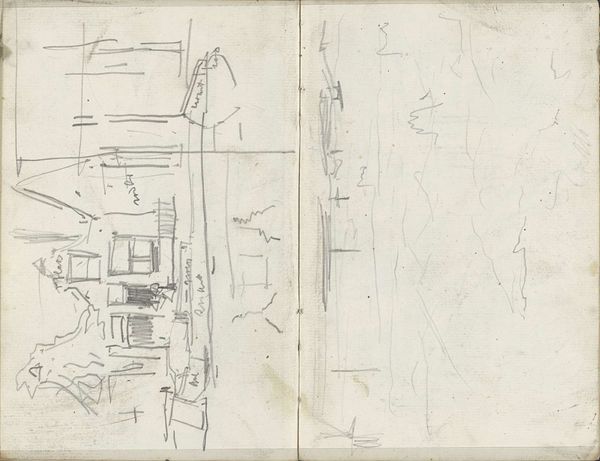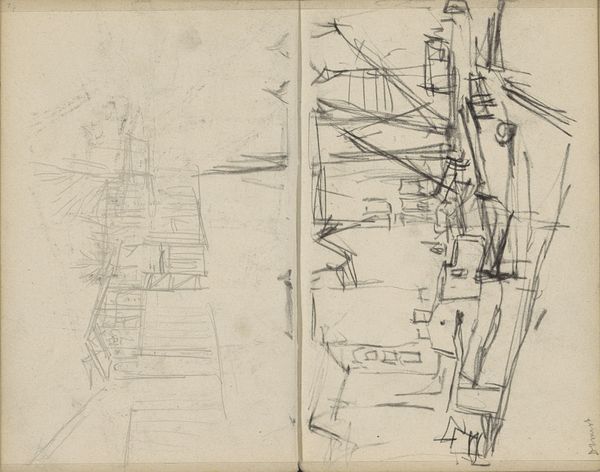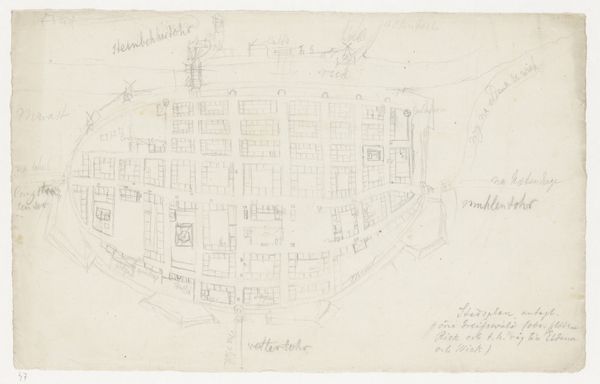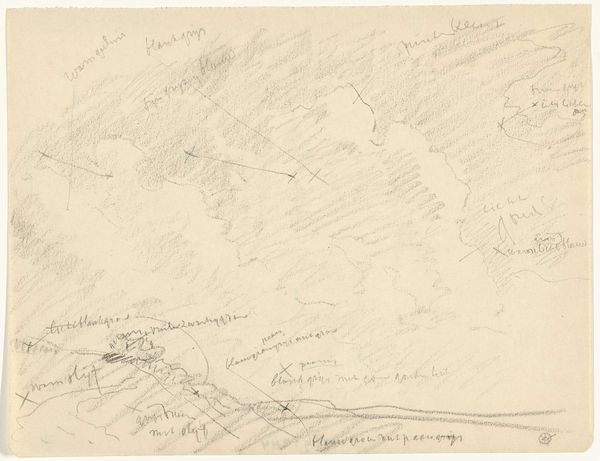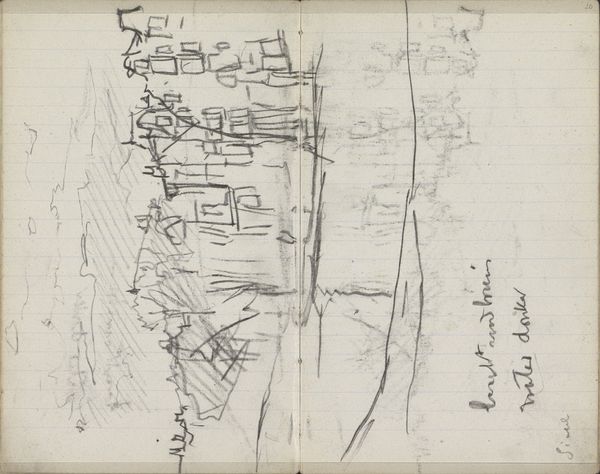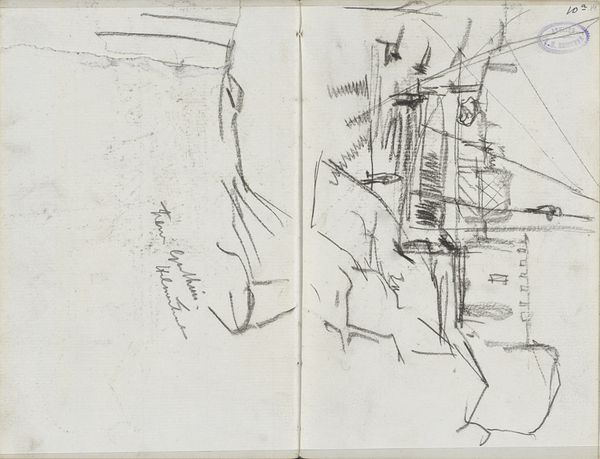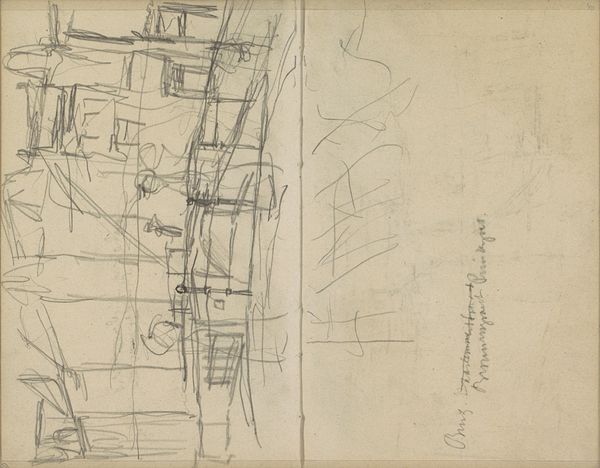
Dimensions: height 234 mm, width 283 mm
Copyright: Rijks Museum: Open Domain
Curator: Looking at this sketch, I feel as if I've stumbled into a dream, a quiet afternoon viewed from a slightly off-kilter perspective. Editor: I find it captivating how Gerrit Willem Dijsselhof, in what is titled “Vaart met huizen, met kleurnotities,” which translates to “Canal with houses, with color notes,” offers more than just a depiction of architecture. Created somewhere between 1876 and 1924, the drawing reveals the artist's notations, seemingly personal reminders scattered across the image, which can now be viewed at the Rijksmuseum. Curator: Color notes, you say? But it's predominantly graphite on paper. Does this imply a layering of perception, where color exists more as memory or potential rather than direct representation? Editor: Exactly. The graphite marks lay down an almost spectral image, but those notes add a layer of understanding – little seeds, one could say, about how we should see this place. Consider also that sketches historically possess their own kind of coded language, they suggest, more than define. Curator: Indeed. The marks resonate as alchemical symbols. The entire urban setting transmutes into a landscape of potential. And then the cityscape element itself brings such cultural baggage - cities are places where our symbols cluster. What sort of canal-side place would you suppose this is? The overall lightness makes me feel perhaps, Northern, and cold. Editor: Given Dijsselhof's background, it likely depicts a Dutch scene. The architectural elements, despite being somewhat impressionistic, speak of a distinct, modest urban development by the water. Curator: The interesting tension here, that it isn't so much academic precision but personal expression – makes me rethink even the value of the detailed drawing, the perfect rendering of urban architecture in general. What truths do we prioritize, or even recognize, in a city view? Editor: A beautiful point. Ultimately, Dijsselhof encourages us to delve beyond the aesthetic surface, perceiving beyond the visible and maybe more to do with the deeply human story. Curator: I’ll carry this question forward as I move on. Perhaps my appreciation is no longer so much for art but life, more generally. Editor: Perhaps all true appreciation merges into one feeling, no matter the starting point. A truly pleasant consideration to move forward with!
Comments
No comments
Be the first to comment and join the conversation on the ultimate creative platform.
